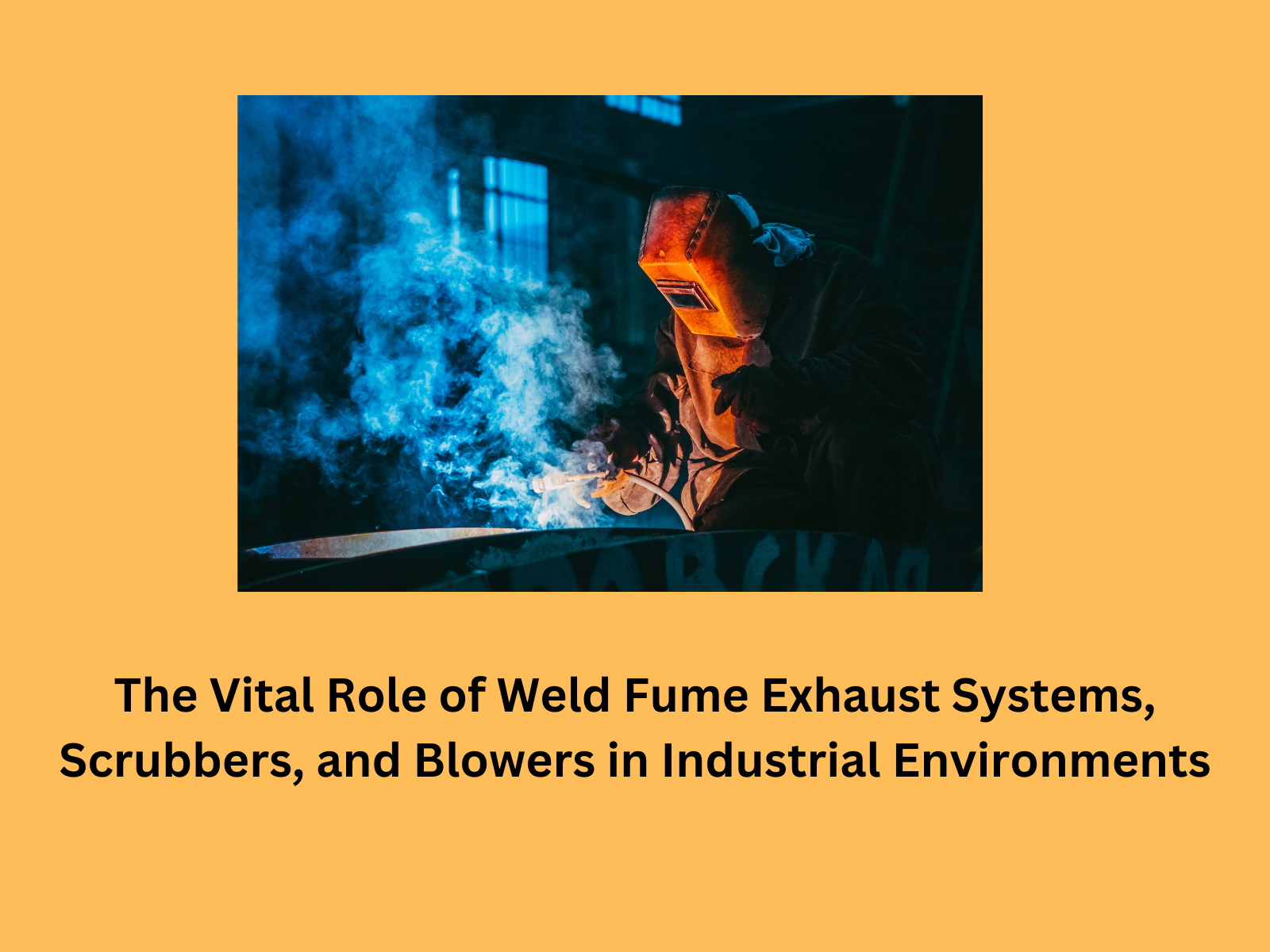Weld fume exhaust systems play a pivotal role in safeguarding the health of workers and the environment by capturing and removing hazardous pollutants generated during welding processes. These systems are designed to effectively extract fumes, smoke, and dust at the source, preventing them from dispersing into the workplace. By implementing weld fume exhaust systems, industries can significantly reduce the risk of respiratory issues among workers and ensure compliance with environmental regulations.
Welders are one of the most exposed personnel to workplace-related health issues due to toxic fumes from welding operations as welding process, is an essential component of industrial processes. Welding releases harmful fumes and particulate matter into the air, posing health and environmental risks.
OSHA Standard 1926.353 has set Permissible exposure limit (PEL) to welding fumes at 5mg/m3 per. Control measures are thus indispensable for maintaining a clean and safe working environment. In this blog, we delve into the significance of Weld Fume Exhaust Systems, Scrubbers, and Blowers and explore how they contribute to the overall well-being of personnel.
What are the various types of weld processes?
- Shielded Metal Arc Welding (SMAW)
- Metal Inert Gas (MIG) or Gas Metal Arc Welding (GMAW)
- Tungsten Inert Gas (TIG) or Gas Tungsten Arc Welding (GTAW) Welding.
- Flux Cored Arc Welding (FCAW)
- Plasma Arc Welding (PAW), Plasma Arc Cutting (PAC)
- Submerged Arc Welding (SAW)
- Spot welding.
- Gas Cutting using [oxyacetylene]
Welding fumes generally contain particles from the electrode and the material being welded and the fumes are a complex mixture of metals metallic oxides, silicates, and fluorides.
- Composition of welding rod.
- Filer metals and base metals are used.
- Type of coatings present.
- What location weld operation is performed – open area or confined space
- Work practices of the welder (e.g. removing coatings, cleaning surfaces, proper positioning to avoid breathing fumes, etc
Weld fumes are associated with significant health risks like respiratory irritation, irritation of eyes, nose, and throat, damage to the nervous system, and serious conditions like lung cancer, and skin cancer amongst other health risks.
Many of these hazards can be controlled by using the right work practices, using PPE, and most importantly having engineering controls like the right ventilation in place. Weld Fume Exhaust Systems are an important way to mitigate this risk.
Weld Fume Exhaust Systems
A weld fume exhaust system is a specialized ventilation system designed to capture and remove hazardous fumes, gases, and particulate matter generated during welding processes. These systems play a critical role in maintaining workplace safety by ensuring clean air and protecting workers from exposure to toxic substances.
Key Components of a Weld Fume Exhaust System:
- Hoods or Capture Devices: Positioned close to the welding source to capture fumes at the point of generation.
- Ductwork: Transports the captured fumes to the filtration or exhaust unit.
- Filtration Unit: Removes harmful particulates and gases before releasing clean air back into the environment.
- Blowers or Fans: Create the necessary airflow to pull fumes through the system.
- Exhaust Outlet: Safely expels filtered air outside the facility or recirculates clean air indoors.
In a ventilation system, an air-cleaning device removes or captures the contaminants that are present in the air. The type of air cleaner used will depend on:
- Type of air contaminant to be removed,
- The concentration of the contaminant in the air,
- How many contaminants must be removed to meet regulations or standards,
- Type and size of dust particles,
- Temperature, humidity, etc.,
- Fire safety and explosion control, and
- Air pollution control regulations.
What are the various types of types of Ventilation Equipment suited for Weld Fume Exhaust?
- Dry Type : Bag Filter Dust collectors or Electrostatic Precipitators, (ESPs)
- Wet Type also called Wet Scrubbers
Bag Filter Dust collectors also called Fabric Collectors
Where contaminated air passes through a special filter in the dust collectors. As the dust builds up it must be eventually removed by either an automatic system, which shakes the dust from the fabric, or by replacing the fabric bags.
Industries that commonly use a fabric collection system include foundries, grain handling, material handling, and crushing and grinding operations.
Electrostatic Precipitators
Electrostatic precipitators remove fine particles using an electrically charged collection plate. Electrostatic precipitators are very efficient at collecting fine particles but cannot be used in very dusty operations because they clog easily. They can effectively remove fumes and fine particles.
Wet scrubbers or collectors
Wet collectors use water droplets and mist to help settle fumes, dust, gas, and other contaminants from the air. These collectors can easily handle high-temperature gases. Collecting dust in a wetted form can minimize a secondary dust problem when disposing of collected material. In addition, some dust represents explosion or fire hazards when a dry and a wet collection system can minimize this hazard.
The system is designed comprehensively with various factors going into consideration while designing the system by the engineering team depending on the Main components of the Fume Exhaust System
- Hoods
- Plenum & Ducting
- Weld Fume Exhaust System
- Centrifugal Fans
- Dampers.
What factors should be considered when selecting the right weld fume exhaust system?
- Maintenance costs – Before the equipment is selected, it is important to know about the maintenance and operational costs,
- Size of the equipment and ease of installation.
- Monitoring & proof that the equipment is functioning reliably
- The device must meet local and national regulations for environmental pollution control.
- The responsibility of the due diligence falls on the employer to do an assessment of hazards and put in the right control measures to protect plant personnel.
For cleaner, safer industrial environments, weld fume exhaust systems, scrubbers, and blowers stand as indispensable tools. As the importance of environmental responsibility continues to grow, investing in these advanced systems becomes not just a necessity but a proactive step towards a sustainable and healthier future for both workers and the planet.

